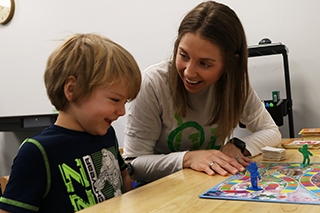5 Expert Tips to Promote Language When Reading With Your Child
Reading with your child is more than just a bedtime ritual—it’s an essential part of their language development and confidence building. You can start reading with their child at any time, whether while they are still in the womb or a few months after birth as the child shows more interest. Incorporating fun and interactive elements into your reading routine can enhance both the experience and your child's learning.
Here are 5 tips to
help you make the most of reading with your child:
1. Give Them Choices: Start by letting your child choose
between two books. This small decision-making process helps them feel involved
and encourages them to communicate their preference. Allow your child to read
the books they wish, even if it means jumping around or revisiting favorite
parts repeatedly. Whether they point, speak, or use another method, the
important thing is that they’re practicing communication.
2. Engage with the Story: Ask your child questions about the
story or the pictures. Typical comprehension questions like “Who is hiding?” or
“What’s happening here?” can get them thinking and talking about what they see.
This not only improves their comprehension but also makes the reading
experience more interactive.
3. Use Pictures to Build Vocabulary: Books with lots of pictures are great
for teaching new words. Point out objects, animals, colors, or shapes, and name
them. If your child tries to say a word but doesn’t get it quite right, like
“Twain” instead of “Train”, gently correct them by repeating the word clearly.
This helps with both vocabulary and pronunciation.
4. Make Reading Fun with Silly Sounds: Fun sounds can help your child understand the meaning, emotion, and social cues.
Play around with high and low tones, squeaks and grunts, and accents. It also
makes reading — and listening — more fun! As we know, motivation is key to
success, so making the experience enjoyable for children allows them to get the
most out of the activity
5. Discuss Feelings Books can be great conversation
starters for children working on social skills. As you read, take the time to
discuss how the characters might be feeling and why. Acknowledge when the characters must resolve a conflict and talk about
whether their actions are appropriate. Ask your child to propose
alternatives.




Comments
Post a Comment